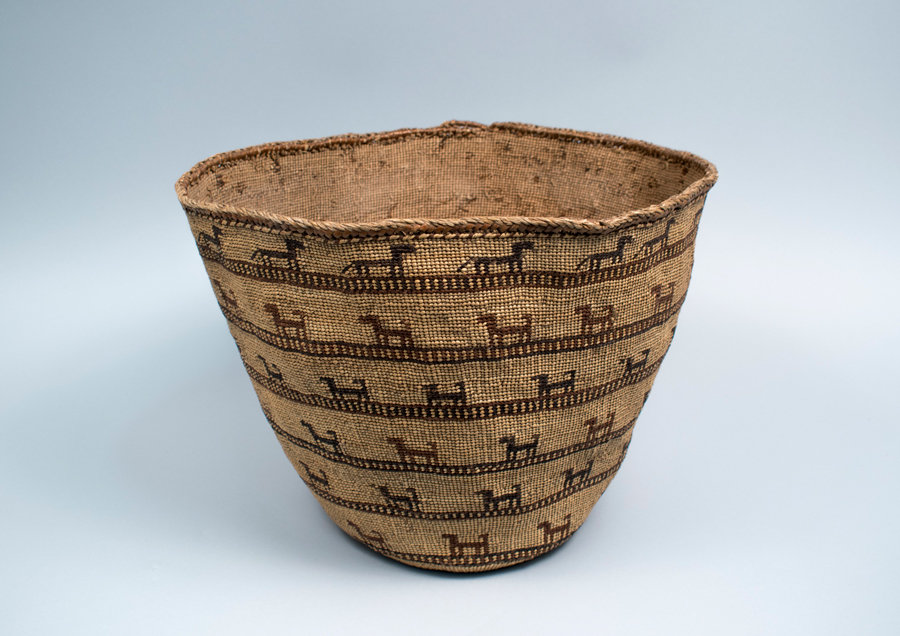
The young girl gave one last swipe of her shinny stick to the hard cedar ball, burned for durability. Her paternal grandmother, mother and cousin-sisters were already gathering in preparation for a trek into the forest to peel cedars. The canoe specialist’s trainee who would accompany them was anxious to start. Once the women arrived at the perfect cedar, and he had helped them peel the thick strips, he might scout further into the forest for a suitable canoe cedar.
The young girl raced into the longhouse, the double row of cedar roof boards overlapping to drain rainwater, the clapboards fastened with cedar withes. Scooting past her grandfather, who was sipping tea made from cedar cones to relieve his rheumatism, she headed for her father’s section of honor in the longhouse, furthest from the door. Under the bed platforms of cedar were the family’s big cedar bark storage baskets sitting on cedar mats, woven to be the length of the family’s partition.
The young girl shifted the cedar bark clothing in the largest open work basket, searching for her waterproof cloak fashioned of shredded cedar bark woven with the downy feathers of waterfowl wings. Failing to find her cloak, she grabbed her cedar bark poncho and pulled it over her head.
She need not have worried; the party of women were soon deep into the forest where little rain could penetrate beneath the thick branches. The young girl had shown an aptitude for making the coiled, watertight baskets of cedar bark so treasured that they were handed down as heirlooms and given as special gifts by all Native families in Puget Sound. She hoped that today she would be allowed to start the cut from which the long strip of cedar bark would be peeled from the tree. While the party walked single file through the forest, the girl noted the site of a rotten Douglas fir nurse log that supported the young trees of his wife, Cedar. The long roots of cedar were the best for baskets. She imagined soaking the split roots. When they were pliable enough to bend easily without cracking, she would scrape the long roots with her favorite clam shell.
The women had a successful day, the young girl carrying on her back the strips of inner bark separated from the outer bark and rolled into coils. They were lucky. The sap was running, the bark was not sticky, and the peel from the first tree they tried was a good one, 20 feet long, with a straight grain. After a year of drying, the inner bark could be split into long strips for baskets and mats, or pounded and shredded to fibers as fine as silk.
As the party neared their village, the young girl sensed the change. People were bustling, digging cooking pits for steaming clams and venison, heating rocks to drop in the waterproof baskets to boil water and heat soups and stews, and bringing out the cedar splint baskets of salmon backbones and salmon eggs. Strangers were gathered near their canoes pulled up on the shore, and one of the women wore a mountain goat wool skirt. The girl knew then that these were the relatives of the woman who would be her father’s second wife, his bride from way upriver on the Green. Then she saw the baskets being unloaded from the canoes, full of gifts for the groom. She hoped that one of the gifts would be the highly sought mountain grass the Green River people dyed and used to imbricate designs into their baskets so different from those of her people.
At the end of the young girl’s day, she sat with the other children around her grandfather’s fire hearth while he told the story of the battle between the Sky People and the Earth People. While the battle raged, Beaver stuck a piece of fire into the alder, into the willow and into the cedar. Beaver said that the roots of those trees would be fire drills for the future people. As she dropped into sleep on piles of furs on her bed platform, the girl faintly heard the adults playing slahal, one gambler secretly holding a fungus that grew on cedar, bringing good luck to the owner.
This young girl knew the central role that cedar played in the culture of her people. Cedar, the Life Giver, permeated all aspects of Native life in Puget Sound — waterproof clothing, hats, houses, canoes, tools, torches, buoys, baskets, mats, serving bowls, toys, diapers, toweling, parts of fish traps, fish nets and more. Native people on Puget Sound formed every element of the cedar into material trappings, and to use in ceremonial rituals and in healing.
Although cedar shaped one of the world’s great cultures, the mighty and straight-grained Western red cedar (Thuja plicata) that can live hundreds of years, is rarely, if ever, seen on the Key Peninsula in the size that it can reach. At least two cycles of logging have removed the giants that lived here, reaching to the salt water. Occasionally, we see young remnants of those groves, with their understory of ferns and salal and, if swampy, skunk cabbage.
The Native people expressed gratitude and respect for the cedar each time they took its life-giving roots, limbs, fronds and wood. In turn, I thank those land stewards that cherish their cedars and allow them to keep breathing, to provide homes for countless birds, creatures and insects, to scent the air after a rain, and to gracefully wave their sweeping boughs in a gentle breeze. And I thank the cedars for their sheer beauty, their steadfastness and the succor they offer on difficult days.
UNDERWRITTEN BY THE FUND FOR NONPROFIT NEWS (NEWSMATCH) AT THE MIAMI FOUNDATION, THE ANGEL GUILD, ADVERTISERS, DONORS AND PEOPLE WHO SUPPORT INDEPENDENT, NONPROFIT LOCAL NEWS